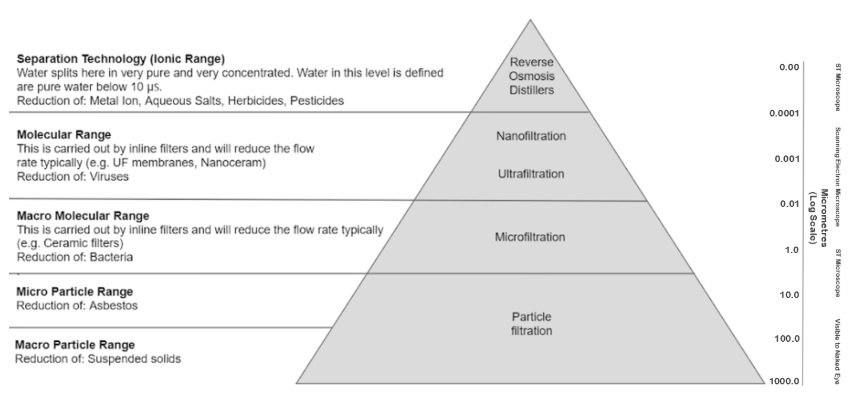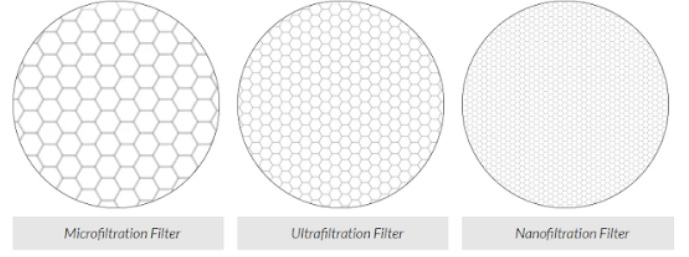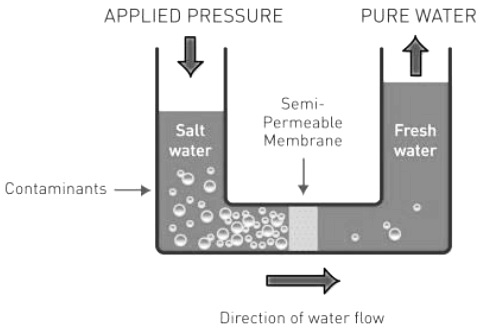Introduction to Water Filtration & Molecular Hydrogen
Water Filtration
It is essential to take into consideration the type of water consumed and used as not all water is the same. As compounds dissolve at different stages of the water cycle, water itself is not entirely pure. In addition to this, chemicals that are added must also be taken into consideration, as there are multiple toxins in water, such as fluoride and chlorine, which have a variety of detrimental and toxic effects on the human body. For instance, fluoride contributes to the calcification of the pineal gland in the brain; there are also studies to suggest how excess fluoride intake can lead to neurological damage, dental fluorosis, thyroid problems and more. As chlorine is a disinfectant, used in cleaning products as well as swimming pools, the implications of what it does to the human body does not appear to be widely understood or acknowledged.
Another factor to take into account is increased industrialisation and inadequate waste disposal, where toxic ions such as arsenic and lead accumulate and dissolve in water. Tap water unfortunately suffers from insufficient regulation, especially when hormones for example are not included in UK water standards, yet waste water recycling is on the increase.
How one decides how to treat their own water is represented on a simple pyramid model. As such, there are different levels of filtration, which can be seen in Figure 1. As you rise up the pyramid, the impurities are smaller on the Nm scale or become more complex to reduce.

Figure 1 Water Filtration Pyramid & Spectrum
The filtration listed in Figure 1 is physical methods, which employ a porous barrier through which water passes through, resulting in the separation of water and solids. The further up the pyramid, the pores of this medium become much smaller (see Figure 2); this shows that the smaller the pores, the lower the ionic and toxicity range.

Figure 2 Filtration Porous Barriers Comparison
Distillers and Reverse Osmosis (RO) are at the top of the pyramid and sit in the “pure water” category. Distillers boil the water and condense it and remove all dissolved solids and gases above the boiling point of water (100°C). Distillers fall short of being comprehensive for dissolved gases, as well as suffer from huge practicality issues, especially with energy efficiency. RO provides approximately 95% of what a distiller can in terms of dissolved solids, but as they use activated carbon and a nominal RO membrane (0.001-0.0001 microns) are more effective overall for dissolved gases, which represents a group of chemicals which make up the vast majority of the 20,000+ known impurities.
This is why reverse osmosis (RO) is the finest of all purification and filtration methods, which forces contaminated water through a semipermeable membrane to remove impurities and dissolved ions, including lead and sulphate (See Figure 3), which other filtration systems do not; the process of Nanofiltration for instance, would be able to remove substances such as viruses and bacteria, but not ionic substances that RO is able to achieve. As such, it is the only system to remove all impurities, leaving behind pure water. RO, therefore, allows for high-quality pure water that is safe to drink by reducing contaminants that can lead to health issues. RO removes dissolved compounds due to the external pressure exerted on the water through the membrane.

Figure 3 Reverse Osmosis
There are also concerns regarding the lack of nutrients in reverse osmosis water, however, such deficiencies are often compensated through diet. Tap water does not have much in terms of nutrients either, but an exceptionally high level of contaminants. Another concern is that the RO process may reduce the Ph level of the water to 5.5 making it more acidic, however, stomach acid ranges between 1.5-3.5. This is to say that drinking RO water is safe as stomach acid is much more acidic. Common misconceptions about “alkaline water” have for years been perpetuated as the source of therapeutic benefit in water, yet it was the molecular hydrogen all along!
Molecular Hydrogen
Over the last decade, hundreds of studies have been conducted into molecular hydrogen and its applications on the human body as a form of therapy against a wide range of diseases. In short, it has been shown to have a positive effect on over 170 human disease models, such as Parkinson’s, diabetes and metabolic syndromes; it has no cytotoxic effects, meaning that it is not harmful in any way to the body. There are however possible contraindications for people with organ implants, as hydroxy form of hydrogen has in cases repeatedly shown to improve the immune system, which increases the likelihood an implanted organ can be rejected.
Several studies have shown molecular hydrogen to have an anti-oxidative effect, where it is able to reduce oxidative stress by eliminating free radicals. It is selective in that it is able to target and prevent the harmful effects of these free radicals, which cause damage to the cells. It also acts as an anti-inflammatory in the body, which can be caused by oxidative stress, by selectively neutralising and removing the specific reactive oxygen species causing the inflammation. It is also anti-apoptotic, meaning that it aids and promotes the survival of cells; it can also inhibit unhealthy cell proliferation, meaning that it is able to prevent those types of cells from rapidly spreading and increasing.
What this means for the human body is anti-aging, scar tissue elimination, blood pressure regulation, immune system regulation, increased muscular endurance, reduced anxiety as well as pain relief. To reap the benefits, molecular hydrogen can be drank as hydroxy-infused water, inhaled as a gas or topically applied to the skin. See Figure 1 below:
Figure 1 Effects of Hydrogen Therapy
Due to its efficacy in combating against debilitating conditions whilst improving overall quality of life, this has become an exceptionally well used form of therapy in Asia, specifically in Japan and China.
Dr. Jon Xue Zhang
Mark Kent
Osmio Water Research Team



